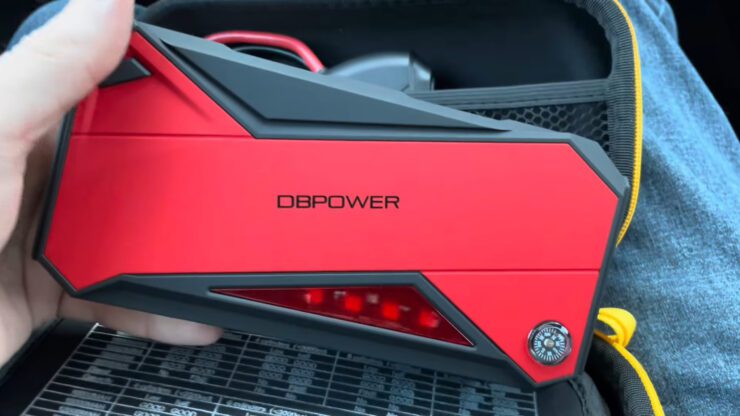A jump starter is such a handy thing to have in your car these days, just in case of a dead battery. The tech has gotten so user-friendly too.
No more hassling to find someone to help – these things let you start right up on your own. That’s a real time-saver when you’re in a pinch!
Let’s talk through what to look for in finding the perfect jump starter for your ride.
Types of Jump Starters
Now there are so many options that all do things a little differently.
It’s awesome how the technology has advanced. Each type really has its own perks to consider. I bet figuring out the unique benefits will help folks pick the perfect match for their ride.
Nothing worse than a dead battery when you’re in a hurry. With so many choices that make helping yourself easy, you’ll feel ready for whatever comes your way.
- Portable Jump Starters: These self-contained gadgets are exceptional. Portable bounce starters are compact, easy to apply, and do now not require any other automobile. They include their very own battery and can supply the vital electricity to start your automobile. Their portability makes them a famous preference among drivers who want to make sure they’re never left stranded.
Our Pick
DBPOWER Jump Starter 4000A
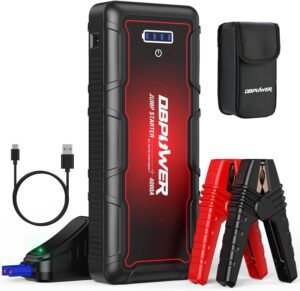
- High Power Output
- Safety Features
- Portable and Multifunctional
- Durability
- Customer Satisfaction
- Limited Accessories
- Size and Weight
- Initial Charging Setup
- Traditional Jumper Cables: These cables were the pass-to for decades. However, they come with the disadvantage of wanting a 2d vehicle to offer the soar. This approach can be inconvenient, in particular, if you’re stranded in a remote location or if no different automobiles are around to help.
- Battery Chargers: Battery chargers are vital for maintaining your vehicle’s battery. These devices are beneficial for gradual charging and keeping battery fitness over time, however, they lack the instantaneous energy to start an automobile immediately. They’re perfect for long-term battery care but not for emergency situations where you need to begin your automobile properly.
Each jump starter has its perks, depending on your desires and occasions.
Traditional jumper cables are value-powerful however, they require any other vehicle, transportable bounce starters offer independence, and battery chargers offer lengthy-term battery fitness solutions.
Understanding those types will assist you in making a knowledgeable decision.
Key Features to Consider When Choosing a Jump Starter
Selecting the right jump starter includes numerous key features that determine its effectiveness and suitability for your automobile.
Battery Type and Power Output
The power output, measured in peak amps and cranking amps, is vital for making sure it can begin your automobile.
Smaller cars may want a soar starter with 400-600 peak amps, while larger vans or SUVs may also require 1000 amps or more.
The sort of battery in the jump starter—usually lithium-ion or lead-acid—influences its weight, size, and upkeep desires.
Lithium-ion batteries are generally lighter and extra compact, making them best for portable devices, even as lead-acid batteries are heavier but extra strong.
Battery Capacity and Voltage
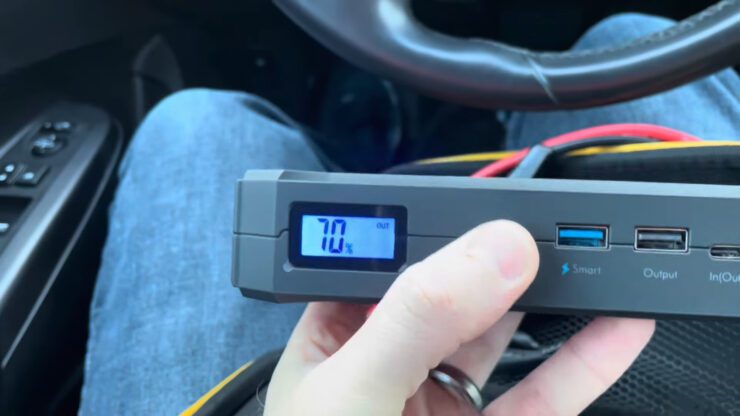
Battery ability, measured in milliampere-hours (mAh), influences how oftentimes you could use the soar starter before it wishes recharging.
A higher potential lets in for a couple of begins or the potential to strengthen different gadgets, like smartphones, the use of integrated USB ports.
Voltage is equally important because it needs to suit your automobile’s necessities. Most cars require a 12V leap starter, however a few larger automobiles may want a 24V choice.
Safety Features
Safety is paramount when handling electrical systems.
Key protection features to look for encompass opposite polarity protection, which prevents damage if the cables are connected incorrectly, overcharge protection, and spark-proof connections that lessen the threat of accidental sparks at some point of use.
These capabilities no longer best defend the car and the starter but also the user from potential damage.
Portability and Size
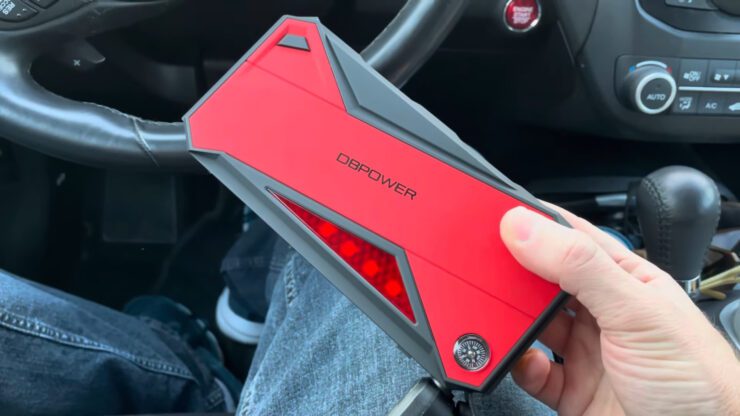
A compact and lightweight soar starter is less difficult to store in your car and more handy to use.
Portability is specifically critical for folks who frequently journey or may additionally want to hold it over long distances.
A durable leap starter can face up to the rigors of being saved in a vehicle, frequently uncovered to severe temperatures.
Weather-resistant designs are particularly beneficial for those dwelling in harsh climates wherein bloodless, warmness, or moisture ought to impact the tool’s performance.
Modern bounce starters often include extra functions that enhance their utility.
LED flashlights can be useful in low-light conditions, USB charging ports can help you rate gadgets in the past, and some fashions consist of air compressors for inflating tires.
For the ones in less warm climates, the sensible pre-heating era guarantees the leap starter features effectively even in freezing temperatures.
A strong guarantee and deciding on a reputable brand is critical for ensuring lengthy-time period reliability.
A well-known emblem regularly affords higher customer support and a higher-satisfactory product, even as an amazing warranty can offer peace of thought in opposition to defects or disasters.
How to Match a Jump Starter to Your Vehicle’s Requirements
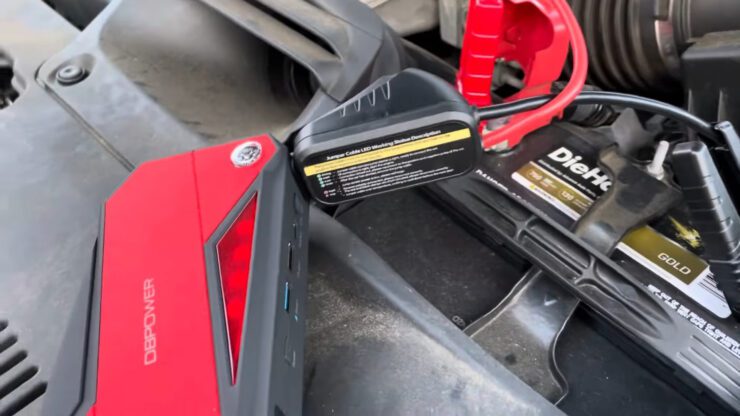
Choosing the right jump starter for your automobile calls for information on your vehicle’s specific power needs.
Not all jump starters are created the same, and matching the power output on your automobile’s necessities is key to making sure a hit start.
For smaller motors like sedans, a leap starter with 400-600 peak amps is usually enough. These automobiles usually have smaller engines that don’t require a high-strength output to begin.
If you force a bigger car, which includes an SUV, truck, or diesel engine automobile, you’ll want a jump starter with a better electricity output, regularly within the range of 800-1000 peak amps or extra.
Diesel engines, specifically, require extra cranking strength due to their higher compression ratios.
In addition to electricity output, remember the engine length while deciding on the right one. For example, a four-cylinder engine would require a great deal much less power than a 6-cylinder or V8 engine.
Matching the soar starter on your engine length ensures that the tool can supply enough cranking amps to begin the auto reliably.
Also, take into account the age of your automobile’s battery and the weather in which you live.
Older batteries or those in cold climates may additionally require greater strength to start, so choosing a bounce starter with a better top amp rating can offer more power needed in these conditions.
Tips for Proper Maintenance and Care
Proper maintenance and care of your soar starter are crucial for maximizing its lifespan and making sure it’s equipped to use when you want it.
Here are a few first-class practices to keep the starter in pinnacle circumstances.
1. Regular Charging
To make sure your leap starter is continually geared up to be used, price it often, even if you haven’t used it.
Most manufacturers recommend charging the unit every 3 to 6 months, depending on the version.
Keeping the battery fully charged prevents it from degrading and ensures it could deliver the essential electricity whilst wished. As well as keep you safe from dying while you’re driving!
2. Storage Conditions
Store your bounce starter in a cool, dry area, away from direct daylight and intense temperatures.
Excessive heat can harm the battery, while severe cold can lessen its effectiveness.
If you stay in a place with intense weather situations, do not forget to preserve the starter indoors throughout durations of non-use and most effectively shift it for your vehicle whilst you’re on the street.
3. Inspecting the Unit
Periodically look into your leap starter for any symptoms of wear and tear or harm. Check the cables for fraying, the clamps for rust or corrosion, and the battery for any swelling or leaks.
Addressing those troubles directly can save you in addition to harm and make certain the unit is safe to use.
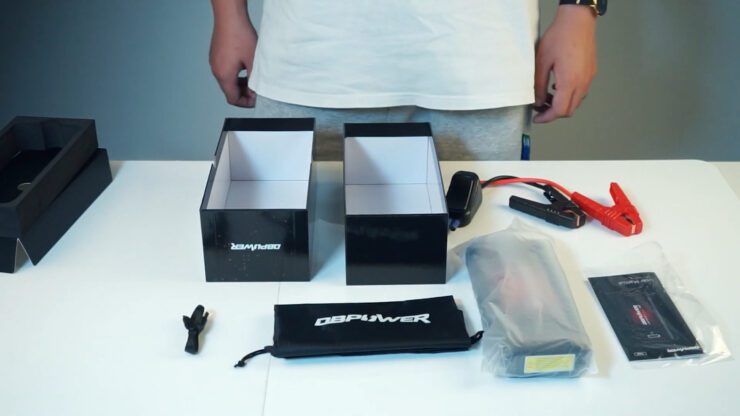
4. Following Manufacturer Guidelines
Always observe the manufacturer’s pointers to be used and maintenance.
Each jump starter might also have specific requirements, such as recommended charging cycles or storage practices, and adhering to these hints will help lengthen the unit’s existence.
5. Avoiding Overuse
While it might be tempting to apply your jump starter for other purposes, inclusive of charging devices often or running add-ons, this could drain the battery and reduce its usual lifespan.
Use the bounce starter commonly for its meant purpose and preserve extra usage to a minimum.
The Bottom Line
Choosing the right soar starter is important for ensuring your vehicle is continually ready to move.
By knowing different types and key functions, you can make a knowledgeable selection that meets your particular needs, providing peace of mind and convenience on the road.

